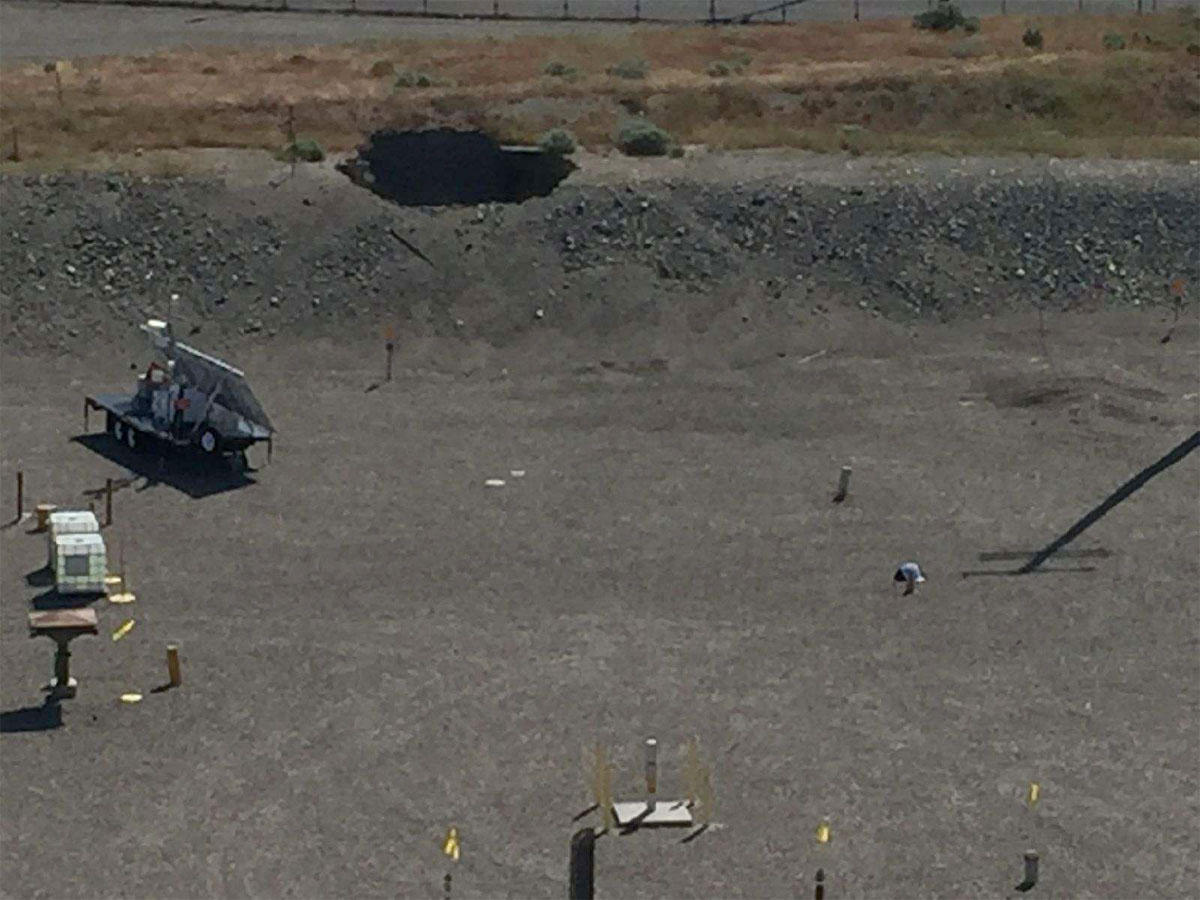
The U.S. Department of Energy issued an emergency alert Tuesday morning at the Hanford site north of Richland, Washington, after a tunnel at a radioactive cleanup site caved in. Workers at a former chemical processing plant were evacuated and thousands more across Hanford were directed to take shelter indoors.
State and federal officials said all workers were accounted for, there were no injuries and no indication of “release” of radioactivity into the environment. By early afternoon, the employees taking shelter were released to go home except those needed for emergency response.
In a Facebook Live session, Hanford spokesman Destry Henderson explained that the emergency was triggered Tuesday morning when workers noticed the roof over a tunnel used to store contaminated equipment had sunk.
“Crews noticed a portion of that tunnel had fallen, the roof had caved in, about a 20-foot section of that tunnel which is more than 100 feet long,” Henderson explained.
This happened adjacent to the Plutonium Uranium Extraction Plant cleanup site. The plant, also known by its acronym PUREX, was used during the Cold War to chemically extract plutonium from irradiated fuel rods for use in nuclear weapons. Rail cars carried the radioactive fuel rods into the plant via either of two tunnels.
“Officials continue to monitor the air and are working on how they will fix the hole in the tunnel roof,” read a mid-afternoon update on the Hanford Emergency Information website. “They are looking at options that would provide a barrier between the contaminated equipment in the tunnel and the outside air that would not cause the hole in the tunnel’s roof to widen.”
A spokesman for the Washington Emergency Management Division said the state Emergency Operations Center was activated and is monitoring the situation. Oregon’s Department of Energy, which has responsibility for radiological safety, also activated an emergency operations center.
Washington Gov. Jay Inslee, in a statement, called the situation serious and said the safety of workers and the community was the top priority.
“Federal, state and local officials are coordinating closely on the response, and the state Department of Ecology is in close communication with the U.S. Department of Energy Richland Office,” Inslee’s statement said.
In 2015, a preliminary report identified the tunnels and the PUREX facility as a major risk area on the Hanford site. The report concluded if the tunnels collapsed, from an earthquake or another natural cause, it could pose a risk to workers because of the highly contaminated railcars stored inside.
Between 1960 and 1965, eight rail cars were pushed inside one tunnel, full of radioactive waste. Another tunnel was constructed in 1964 to add space for 40 more railcars. Currently it has 28 railcars full of radioactively contaminated equipment. In the early hours of the emergency, it was unclear which tunnel caved in.
“There’s lots of legacy out there, and there are a few places where there is substantial, ongoing risks, and (the tunnels are) one of them,” said Charles Powers, a co-author of the risk report.
OPB’s Molly Solomon contributed to this report.
